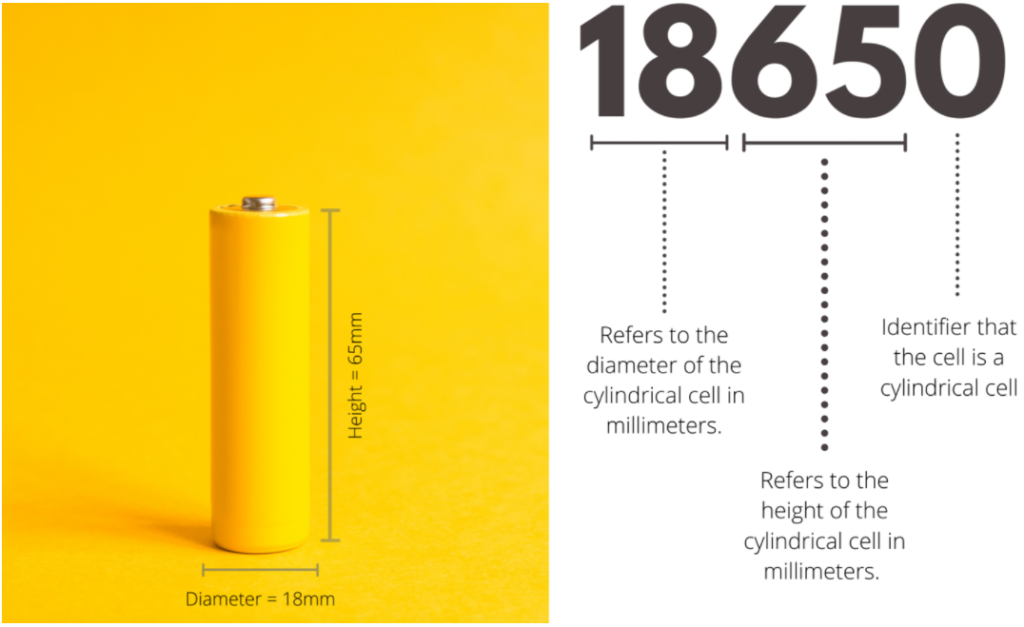Here’s a good article concerning e-bike batteries, Everything you need to know about e-bike batteries [from a battery engineer] – much of the content below is from Natasha George‘s article. And another, Electric bike batteries explained. For sake of this discussion, we’ll cover 3 topics: Battery design, Cell chemistry, and Range.
Battery design
E-bike battery packs are made up of individual battery “cells”. The most commonly used form-factor of cells in an e-bike battery pack is the 18650, which is classified as a cylindrical cell.

When it comes to batteries, there is a strong correlation between price and quality. Cell Manufacturers: Panasonic, LG, and Samsung have a good reputation in the battery industry for their high quality cells, so paying a premium for these cells is worth it. Question: Does this mean I have to stop buying my e-bike batteries from Amazon? Answer: Probably!
It seems you really don’t know what your getting with most of these ‘budget’ batteries, so paying a bit more for pack that shows which cells they use, from a reputable dealer (not saying Amazon and its vendors aren’t reputable) is probably wise. In the words of JohnnyNerdOut, don’t buy a battery that might be a ‘house burner’. I believe knows what he’s talking about!
Cell Chemistry
Lithium-ion (li-ion) batteries are the best option for e-bikes. Li-ion has several variants of cell chemistry. The most popular ones for e-bikes are Nickel Manganese Cobalt (NMC), Lithium Cobalt Oxide (LCO), and Lithium Iron Phosphate (LFP). The metrics to look for when selecting a cell chemistry are:
- Specific Energy: has an impact on range
- Specific Power: how the battery handles high load scenarios
- Safety: does the chemistry have a history of high in-field failures (this is bad!)
There are trade-offs when choosing one chemistry over another, but as we’ve shown in the image below, NMC and LFP are both great options that both offer the best value in terms of performance, price, and safety.

Picking the right battery chemistry has to do with figuring out what matters most to you. Do you want a battery that has a longer range (higher specific energy) but doesn’t have as much power? Or do you want a battery that has a more power (higher specific power) but may not last as long?
Range
The range of a battery pack depends on the amount of energy packed inside of it and is measured in Watt-Hours (Wh). Watt-hours are calculated by multiplying the battery capacity, in Amp-hours, by the battery Voltage.

Doing the math, my 48 volt 14.5 amp-hour battery should give me
14.5*48=696wh, 696wh*(1/20)=34.8miles (round to 35). So why, you might ask, do I get nearly twice that on a 100% charge? Answer: because it depends on bicycle efficiency, bicycle weight, your weight, winds resistance, hills, road surface, temperature, tire pressure, how much you pedal (or don’t), what gears you use, etc., etc.
In Natasha‘s words, “The range that e-bike manufacturers provide should be taken with a grain of salt. That number is generated from tests that are run in perfectly tailored lab conditions. Do you charge any of your electronics in an incubation chamber set at 28° C with a lab-grade charger that applies the perfect current while charging? Yeah, I don’t either. And so, We should assume that the manufacture-specified range is delivered only if the battery is charged and discharged under ideal conditions i.e. not real world conditions.”
Kind of sounds like EPA fuel economy ratings for cars – exactly. Fact: I do a lot of pedaling when I ride my e-bike and really only use the motor for hills and in some cases, acceleration from a stop. That helps a lot to increase my battery range…
For more information about the care and feeding of your e-bike battery, feel free to pop back to my earlier post on the topic: Battery Best Practices. And Natasha has a few more pearls of wisdom to add:
How to charge your e-bike battery to make it last longer
- The thing that will kill your battery faster than anything else is leaving it charged at elevated temperatures. If it’s 80 degrees outside and you have your e-bike fully charged, move it indoors where it’s cooler and try to drain the battery as soon as possible.
- Charge your battery at room temperature as often as possible.
- When sourcing an e-bike battery charger, the slower the charge rate the better. For example, if you have a 2-Amp charger, and your battery is a 14 Ah battery pack, you are charging at 14 Ah / 2-Amps = 7-hours. This is a nice, slow charge which will certainly improve the longevity of your battery pack. Avoid charging at rates that are faster than 2-hours for a full charge.
Bottomline: Choose LFP or NMC chemistry, slow charge, avoid storing or charging in hotter temperatures, and leave the battery at around 30% charge if you don’t plan on using it for a while.
See also: Ebike charging for long Battery life
